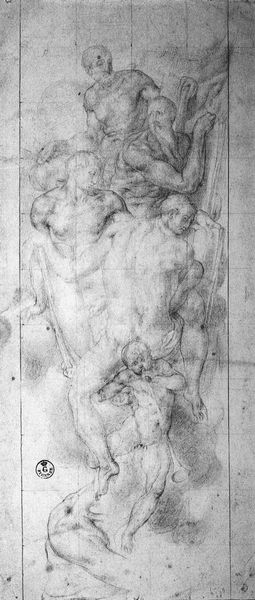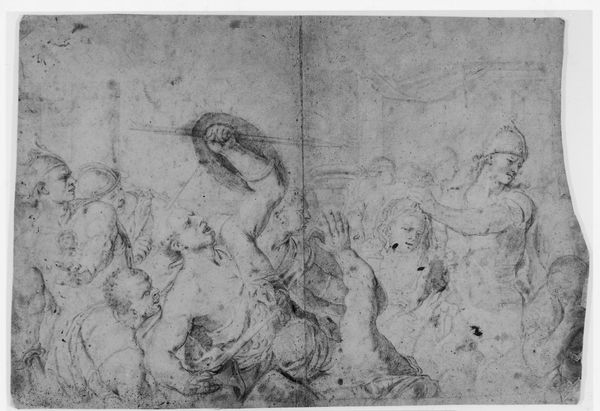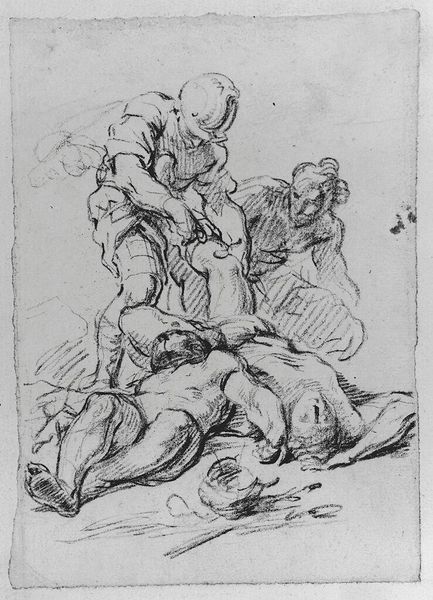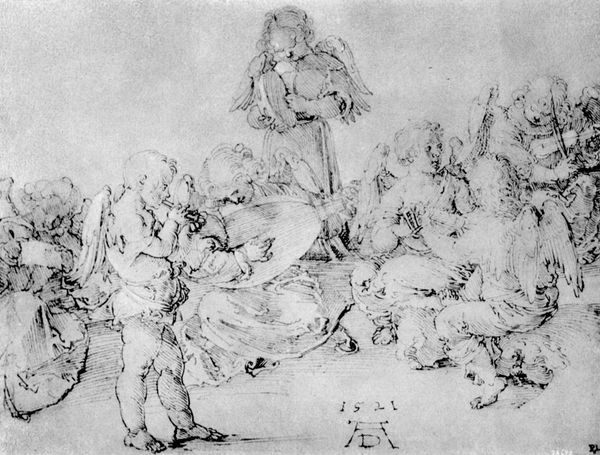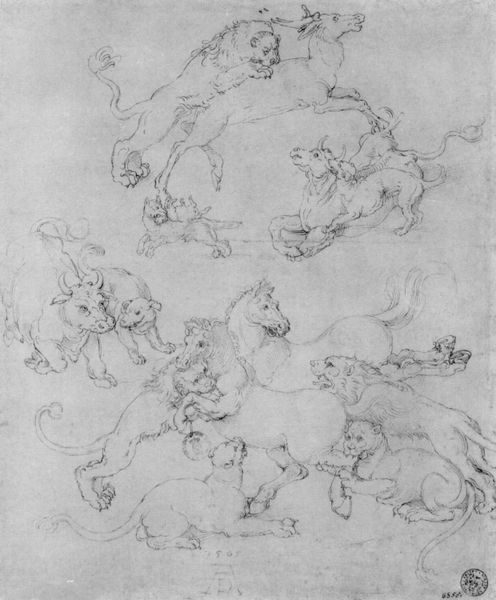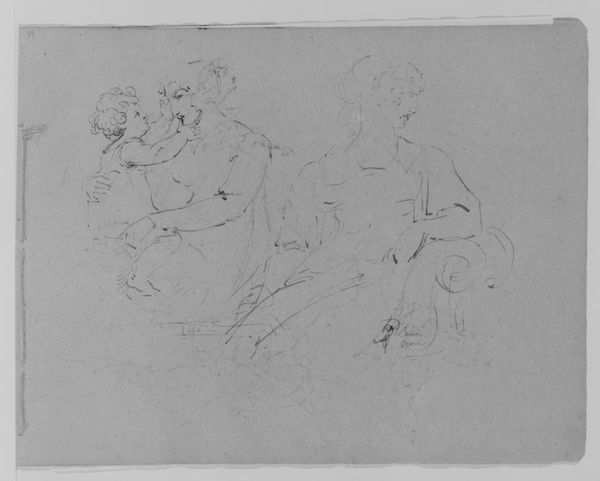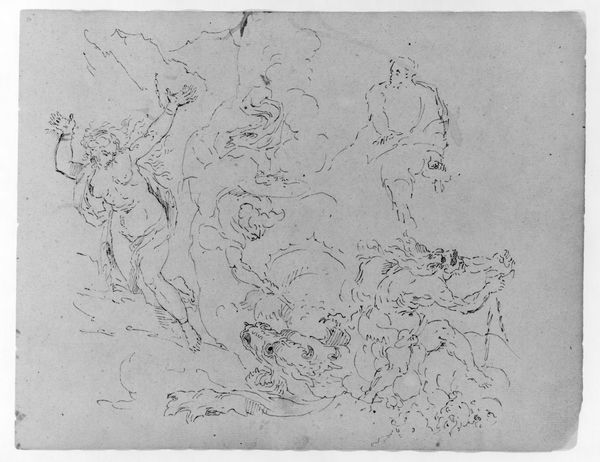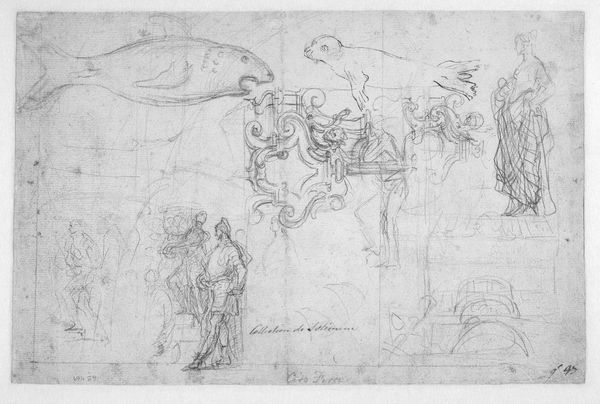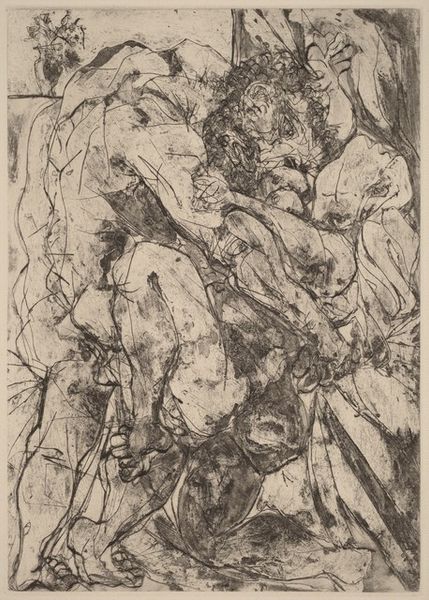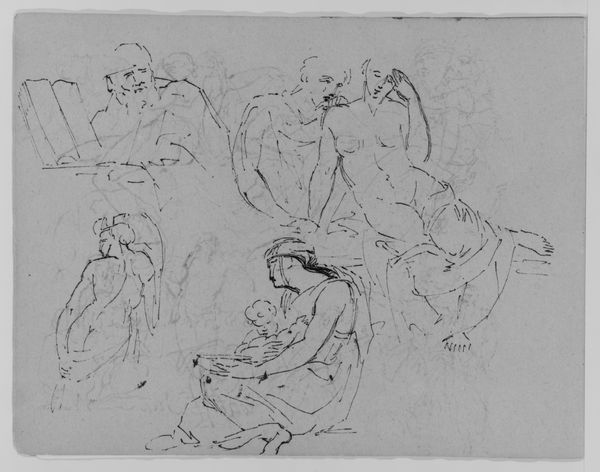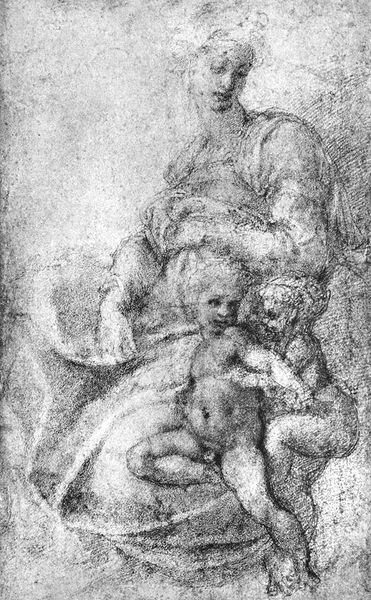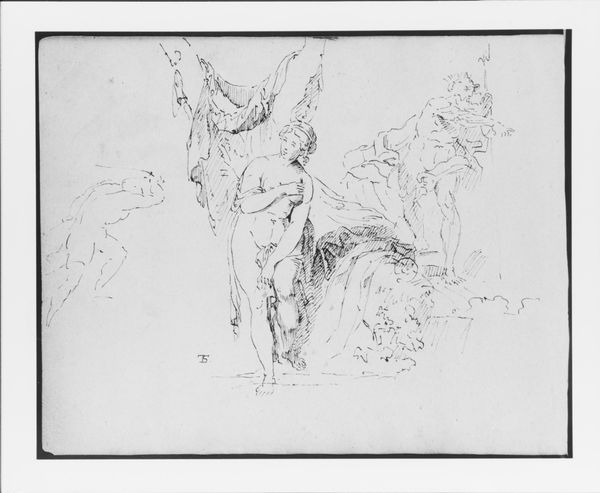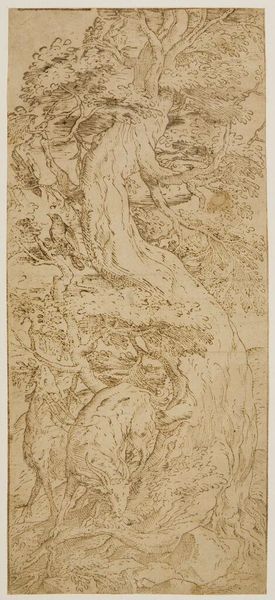
drawing, paper, ink
#
drawing
#
landscape
#
charcoal drawing
#
figuration
#
paper
#
jesus-christ
#
ink
#
christianity
#
line
#
history-painting
#
northern-renaissance
Copyright: Public domain
Curator: Here we have a pen and ink drawing attributed to Albrecht Dürer entitled "Christ on the Mount of Olives." It showcases his meticulous line work and mastery of form. Editor: It’s raw, almost frantic. The figures seem to emerge from a swirl of anxiety. You can almost feel the weight of impending doom pressing down on the scene. Curator: Dürer really captured the emotional crux of the Agony in the Garden narrative, didn't he? Note how he uses the pen strokes to suggest both light and shadow, emphasizing the figures' tormented states. The angel hovering above carries familiar iconography, and it contrasts sharply with Christ’s distress. Editor: Absolutely, it’s like a visual battle of faith versus despair. I love how the sleeping disciples are huddled together at the bottom, completely oblivious to the spiritual drama unfolding just above them. It speaks to the human tendency to find comfort in slumber, even amidst profound moments. Curator: Yes, that slumber symbolizes the human tendency to be unaware of the sacred moments happening around them. The swirling lines, especially surrounding Christ, evoke that sense of spiritual conflict, maybe even divine abandonment. The chalice, which the angel is holding up, also signifies the cup of suffering he must drink. Editor: It's more than just an illustration of a Bible story, though. It's like Dürer's translating that feeling into his lines, really inviting us to contemplate the deeper, universal anxieties of our own existence and inevitable fate. He asks, will we heed the call for more and awareness, or curl into an unthinking, dream-state comfort? Curator: I agree entirely. The drawing reminds us how historical, religious, and personal symbolism combine, adding a deep layer of meaning to simple visual structures. Dürer captures both theological contemplation and genuine humanity within this dramatic, emotional encounter. Editor: And that is why Dürer still feels so present even through so many years—he has captured in plain view what we are, where we were, and where we are probably headed.
Comments
No comments
Be the first to comment and join the conversation on the ultimate creative platform.
